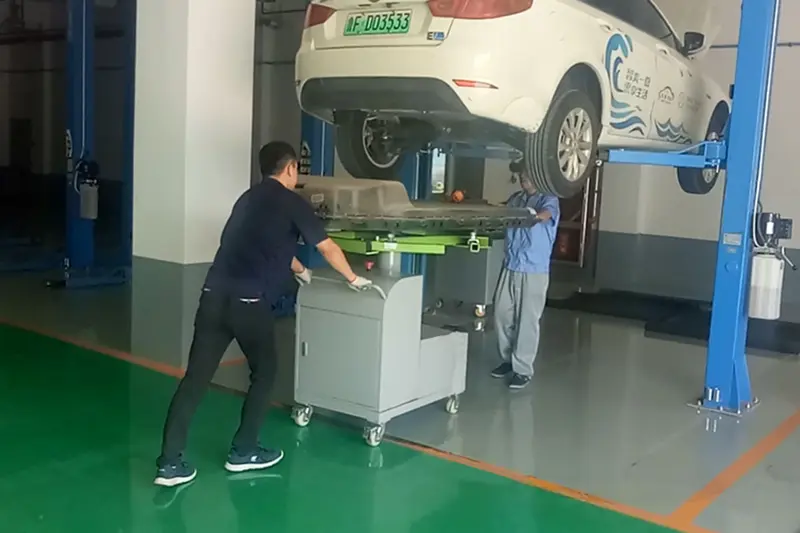****

Understanding the AC Series: A Comprehensive Guide to Alternating Current Circuits and Their Applications in Modern Technology
In the world of electronics and electrical engineering, few concepts are as fundamental as the alternating current (AC) series. The AC series refers to circuits that utilize alternating current and can feature various components such as resistors, capacitors, and inductors. This configuration allows for the efficient transmission of electricity over great distances and is the backbone of modern power systems. In this article, we will explore the principles behind the AC series, its components, calculations, and its significance in today’s technology.
What is Alternating Current (AC)?
Alternating current is an electric current that periodically reverses direction. Unlike direct current (DC), where the flow of electric charge is unidirectional, AC varies with time, typically in a sinusoidal waveform. The most common form of AC in power systems is the sine wave, characterized by its smooth and continuous undulating pattern, which is defined by two crucial parameters: amplitude and frequency.
1. **Amplitude**: This is the maximum value of the voltage or current. It is often described in volts (V) or amperes (A).
2. **Frequency**: This defines the number of cycles that occur in one second and is measured in hertz (Hz). For most household power systems, like those in North America, the frequency is typically 60 Hz, whereas, in many places around the world, it is 50 Hz.
AC Series Circuits
An AC series circuit is defined by components connected in a single pathway, meaning that the same current flows through all components. This configuration has specific characteristics that differ from AC parallel circuits, where components are connected across the same voltage source.

Understanding the AC Series: A Comprehensive Guide to Alternating Current Circuits and Their Applications in Modern Technology
Key Components of AC Series Circuits
1. **Resistors**: Resistors impeding the flow of electric current generate heat. In AC series circuits, resistance can affect the overall circuit performance by absorbing energy and reducing the efficiency of the circuit.
2. **Capacitors**: Capacitors store and release electrical energy. They can introduce a phase shift between current and voltage in an AC series circuit. This could result in the current leading the voltage, which is a crucial concept in reactive power systems.
3. **Inductors**: Inductors also store energy, but in a magnetic field. In an AC series circuit, inductance causes the current to lag behind the voltage, which again introduces a phase shift. The inductive reactance can significantly impact the circuit’s behavior in resonant circuits.
Impedance in AC Series Circuits
The impedance (Z) of an AC series circuit is a critical factor as it combines resistance (R) and reactance (X) (which includes both inductive and capacitive reactance). Mathematically, impedance is given by the formula:
\[ Z = \sqrt{R^2 + (X_L – X_C)^2} \]
Where:
– \( R \) is resistance,
– \( X_L \) is inductive reactance,
– \( X_C \) is capacitive reactance.
The phase angle (\( \phi \)) between the current and voltage can be determined using:
\[ \tan(\phi) = \frac{X}{R} \]
Where:
– \( X \) is the net reactance, \( (X_L – X_C) \).
Applications of AC Series Circuits
AC series circuits have numerous applications in both domestic and industrial sectors. Some notable examples include:
1. **Transformers**: These vital components rely on the principles of inductance and reactance to regulate voltage in AC systems, making them essential for electrical distribution.
2. **Electric Motors**: Many AC motors are designed based on series circuits, using both inductance and resistance to operate efficiently, which is crucial for appliances ranging from fans to industrial machinery.
3. **Lighting Systems**: Series-connected AC circuits are commonly found in decorative lighting systems and in certain types of lighting where control and energy efficiency are priorities.

Understanding the AC Series: A Comprehensive Guide to Alternating Current Circuits and Their Applications in Modern Technology
4. **Audio Equipment**: Many sound systems use AC series circuits to control the flow of signals, ensuring clarity and quality in audio output.
Conclusion
The AC series is a fundamental concept that underpins many aspects of electrical and electronic engineering. Its components—resistors, capacitors, and inductors—each play a vital role in determining how an alternating current flows through a circuit and how it interacts with different loads. The significance of understanding the AC series cannot be overstated, as it continues to shape the way we generate and use energy in our homes and industries, making modern life more efficient and interconnected. As technology advances, the AC series will undoubtedly adapt, continuing to lay the groundwork for innovations in power delivery and electronic design.quicklift car lift
